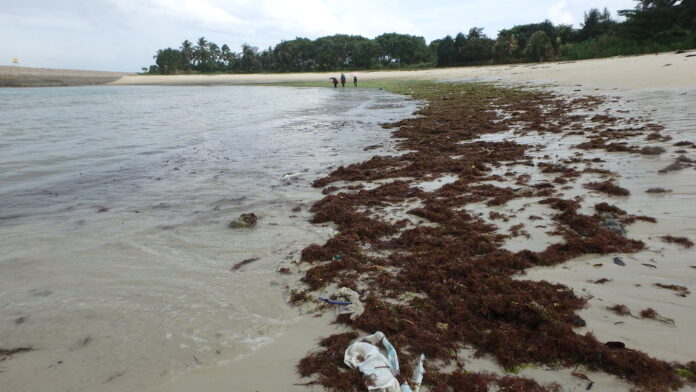Giant Seaweed Bloom in Florida
Outline of the Article
1. Introduction
2. What Causes Giant Seaweed Blooms?
3. Environmental Impact
4. Economic Effects
5. Management Strategies
6. Conclusion
7. FAQs

Giant seaweed blooms have become a concerning issue in Florida’s coastal waters, impacting the environment and local communities. In this article, we’ll delve into the causes of these blooms, their environmental and economic impact, management strategies, and conclude with FAQs to address common queries.
Introduction
Giant seaweed blooms, particularly those of Sargassum, have been increasingly prevalent along the coast of Florida. These blooms, characterized by the rapid proliferation of seaweed species, raise significant concerns due to their environmental and economic implications.
What Causes Giant Seaweed Blooms?
Giant seaweed blooms are primarily triggered by factors such as nutrient pollution, climate change, and coastal development. Excessive nutrients, particularly nitrogen and phosphorus from agricultural runoff and urban sources, fuel the rapid growth of seaweed species. Climate change-induced changes in sea temperature and ocean currents also contribute to the proliferation of seaweed blooms.
Environmental Impact
The dense mats of seaweed that form during blooms can smother coral reefs, seagrass beds, and other critical habitats, disrupting marine ecosystems. Reduced sunlight penetration inhibits photosynthesis in underwater plants, leading to ecosystem degradation. Additionally, decomposing seaweed consumes oxygen, creating dead zones that harm marine life.

Economic Effects
Giant seaweed blooms can have detrimental effects on various sectors of the economy, including tourism, fishing, and recreation. Unsightly seaweed-covered beaches deter tourists, resulting in revenue losses for coastal businesses. Commercial fishermen may face challenges navigating through dense seaweed mats or experience reduced catch rates due to habitat degradation.
Management Strategies
Addressing the issue of giant seaweed blooms requires a multi-faceted approach that involves nutrient reduction measures, monitoring, beach cleanup efforts, and research and innovation. Implementing best management practices to reduce nutrient pollution, developing monitoring programs to track bloom dynamics, and organizing beach cleanup initiatives can help mitigate the impacts of seaweed blooms.
Conclusion
Giant seaweed blooms pose significant challenges to Florida’s coastal environments and communities, necessitating concerted efforts to address their causes and impacts. By implementing effective management strategies and promoting ecosystem resilience, we can work towards mitigating the effects of seaweed blooms and safeguarding coastal ecosystems for future generations.

FAQs
1. What are giant seaweed blooms?
Giant seaweed blooms refer to the rapid proliferation of seaweed species, particularly Sargassum, in coastal waters, often fueled by factors such as nutrient pollution and climate change.
2. What causes giant seaweed blooms in Florida?
Giant seaweed blooms in Florida are primarily caused by nutrient pollution from sources such as agricultural runoff and urban development, as well as climate change-induced alterations in sea temperature and ocean currents.
3. What are the environmental impacts of giant seaweed blooms?
Giant seaweed blooms can smother coral reefs, seagrass beds, and other critical habitats, leading to ecosystem degradation and reduced biodiversity. Decomposing seaweed also consumes oxygen, creating dead zones that harm marine life.
4. How do giant seaweed blooms affect the economy?
Giant seaweed blooms can negatively impact tourism, fishing, and recreational activities, resulting in revenue losses for coastal businesses. Unsightly seaweed-covered beaches deter tourists, while habitat degradation affects commercial fishing operations.
5. What management strategies are being implemented to address giant seaweed blooms?
Management strategies include nutrient reduction measures, monitoring programs, beach cleanup efforts, and research and innovation to better understand and mitigate the impacts of seaweed blooms.
Read More: The Ultimate Guide to Choosing the Perfect Beach Chair for Your Relaxation
